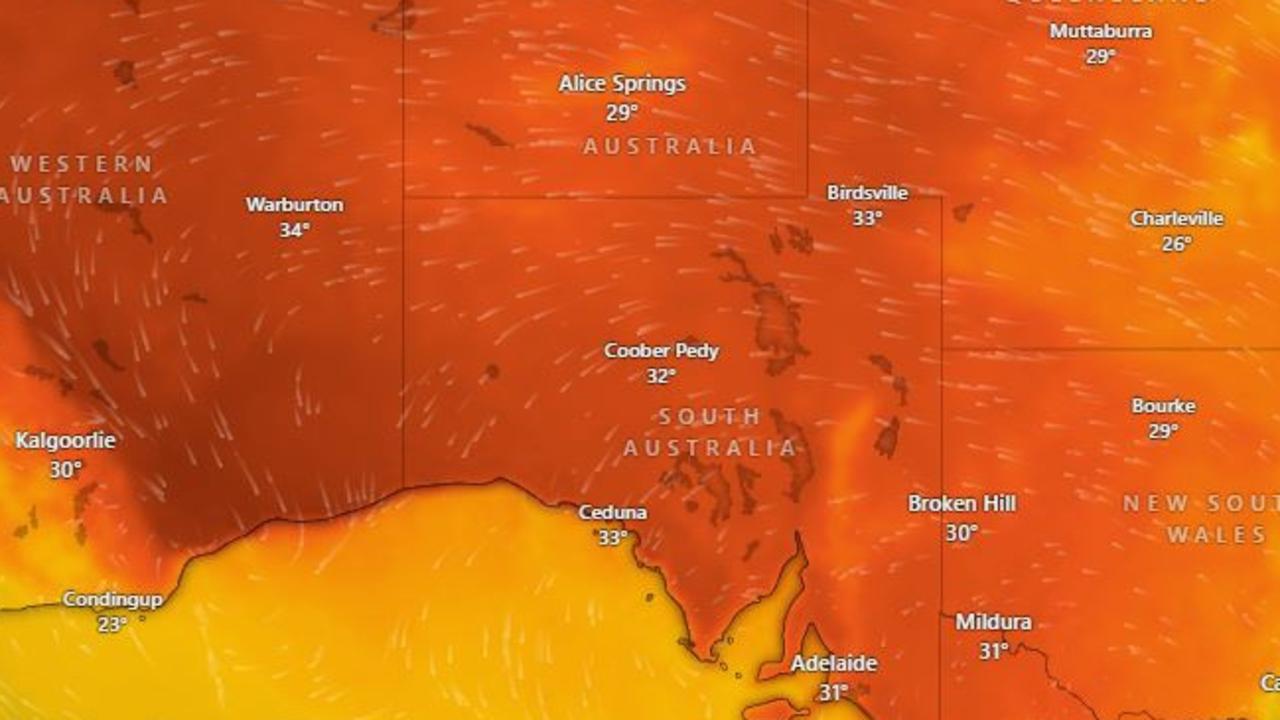Homeowner whose pool collapsed onto Collaroy beach still dealing with aftermath five years later
Five years after an intense storm toppled a beachside swimming pool and left homes teetering, local residents are still dealing with the impacts.
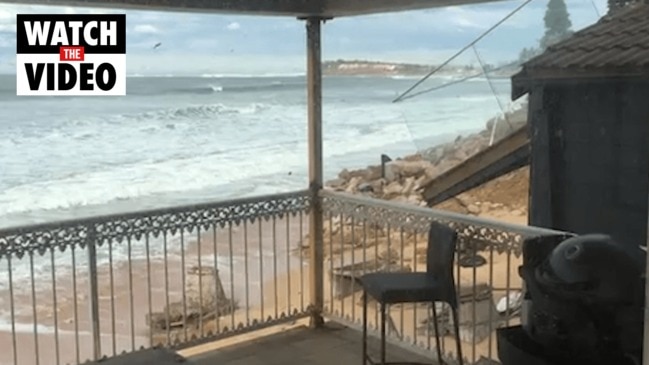
Garry Silk still has a vivid memory of the ocean on the doorstep of his exclusive waterfront property, eating away his garden wave by wave, with impacts he is still trying to come to terms with five years later.
Mr Silk is one of a number of homeowners whose million-dollar homes were impacted by huge swells during a storm in 2016 and had to be evacuated.
Images of a neighbour’s pool collapsed on the beach in the aftermath of the storm went around the world and the damage was so severe, residents were not able to return to their homes for almost two months.
Mr Silk is one of the luckier ones, his home had sturdy foundations that meant it was less likely to be undermined but others were basically renovated “holiday shacks” that didn’t have proper piles and were at risk of collapsing.
Among the group of 10 homes that were impacted, Mr Silk says two families have since decided to sell because their “nerves just broke”.
“They literally decided to go because they couldn’t take the stress of every time there’s a storm, worrying whether the garden would go again,” he told news.com.au.
“Traumatised I would say they were, it’s not nice.”
Time Is Now is part of news.com.au’s partnership with the Monash Climate Change Communication Research Hub, looking at the impacts of climate change across Australia by 2050

Part of the reason the stress has remained is because the residents have still not managed to get a sea wall built to protect their homes.
Community opposition to a sea wall being built in 2002 saw plans abandoned prior to the storm but even after residents were able to get development approval from Northern Beaches Council in September 2018 for the wall, Mr Silk says there are still issues that need to be resolved before work can begin.
These mean they will likely not be able to start building the wall until next year at the earliest.
One of the sticking points has been getting 10 owners to agree to each pay between $250,000 and $400,000 for the construction.
“At the moment if one person can’t or won’t pay, the other nine people can’t protect their properties,” Mr Silk said.
The issues being faced by these homeowners will likely become more common as climate change drives sea level rise, more frequent and damaging storms, and worsening erosion.
In NSW the responsibility for protecting homes has been placed in large part on the owners but the impacts of climate change on individual properties is not always clear and planning around this is largely being left to individual councils to manage.
Mr Silk said Collaroy beach had experienced storms for decades and the area was well known for erosion problems but many homeowners had not thought through the implications, especially as climate change ramps up.
“It’s a well known hotspot but really, no one’s really got to grips with it,” he said.
“I don’t think enough people along this strip had really thought it through.”
Climate change adaptation expert David Rissik of BMT, told news.com.au there was a need for people to be climate literate when considering whether to buy certain properties.
“You can’t expect local governments to protect everyone,” he said.
“There’s a need for people to make their own decisions and determine their own risk but you need data. In some places it’s easy to access and in others it’s as clear as mud.”
While climate change is a global issue, many of its impacts in Australia are being dealt with at a local level, with councils largely given the responsibility of addressing things like sea level rise, storm surges, flooding and erosion.
How they do so can vary across councils and across states.
“There is definitely not a consistent approach nationally, which can be quite confusing,” Mr Rissik said.
“There are resources available on council websites but there’s uncertainty about when impacts will happen or when sea level rises will be reached.”
Mr Rissik said those buying properties potentially impacted by flooding or other risks, needed to understand that this could come at a huge future cost.
“It’s important for people to start to learn more and to start paying attention to these sort of details,” he said.
“If we don’t think about these things and make risk based decisions, we could get ourselves in difficulty in the future.”
Devastating storm
Mr Silk had lived in his home for three years before the 2016 storm hit and said it was located in what appeared to be a “sweet spot” along the beach.
Unlike other nearby properties, which had their property borders fortified with rocks, the area in front of his home and his neighbours’ mainly consisted of sand dunes.
He believes this was because properties to their north and south were more frequently impacted by storms, while they remained relatively unaffected.
“We just sat there until this dreaded storm in June 2016,” he said.
“We had a king tide and an east coast low and it came from the north east. We were just walloped,” he said.
He said tyres found after the storm indicated the area had likely been hit before but it was probably 20 to 30 years ago.
When asked why no further defences built, he said: “I assume it was because no one thought it was necessary because we hardly ever got hit”.
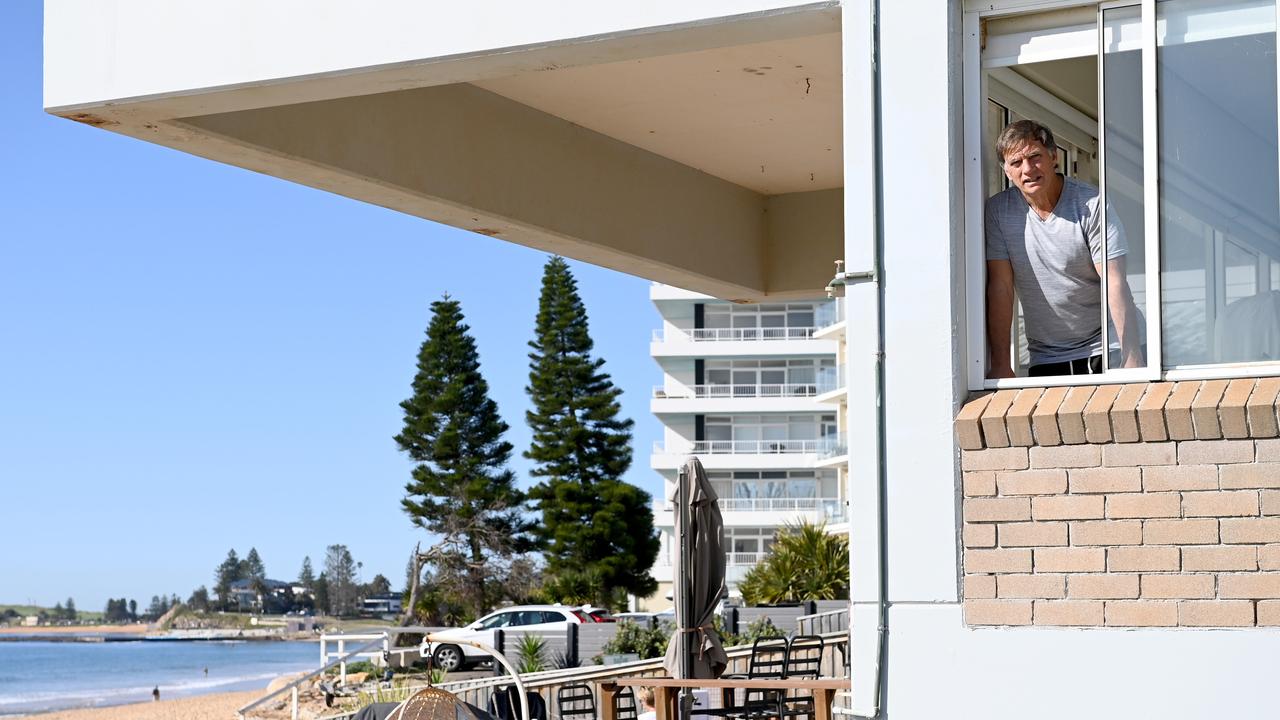
The first hint that their luck had run out came on Friday, June 3, when one of Mr Silk’s colleagues, a keen surfer, asked whether he was worried about the storm approaching that weekend.
“I said ‘what storm?,” Mr Silk said.
On Saturday, Mr Silk noticed waves had begun “niggling away at the dunes” at the end of his property.
“You could stand in the garden and metre by metre your garden would keep slumping away as the sea came racing in,” he said.
“Next door had a cabana and about 8pm on Sunday, it slipped into the sea just like a ship being launched.”
Soon the waters were coming up underneath most of the houses and residents were told they had to evacuate.
Malcolm McGuinness, the owner of the home that saw its pool collapse on to the beach, said seeing images of his pool all over the media was a shock.
“I used to go over there every week and swim in the pool or the ocean,” he told news.com.au.
“It’s a great spot and everyone looked after their properties, it’s unfortunate it happened and hopefully won’t happen again.”
Mr McGuiness, whose family member was living in the property at the time of the storm, said the damage was unexpected.
“At the time no one thought it would happen, we’ve had large seas but nothing like it was at the time, it was a complete surprise,” he said.
“I got approval of the DA (development application for the pool) and that was it.”
He said the pool was still sitting at the bottom of his property, although it was now covered in sand, and was probably acting as a temporary sea wall.
Once the new sea wall is built, Mr McGuiness said he will either demolish the pool or put it back in place.
“That will be up to me to decide but the cost of putting a 50 tonne pool back into place might cost more than the pool itself,” he said.
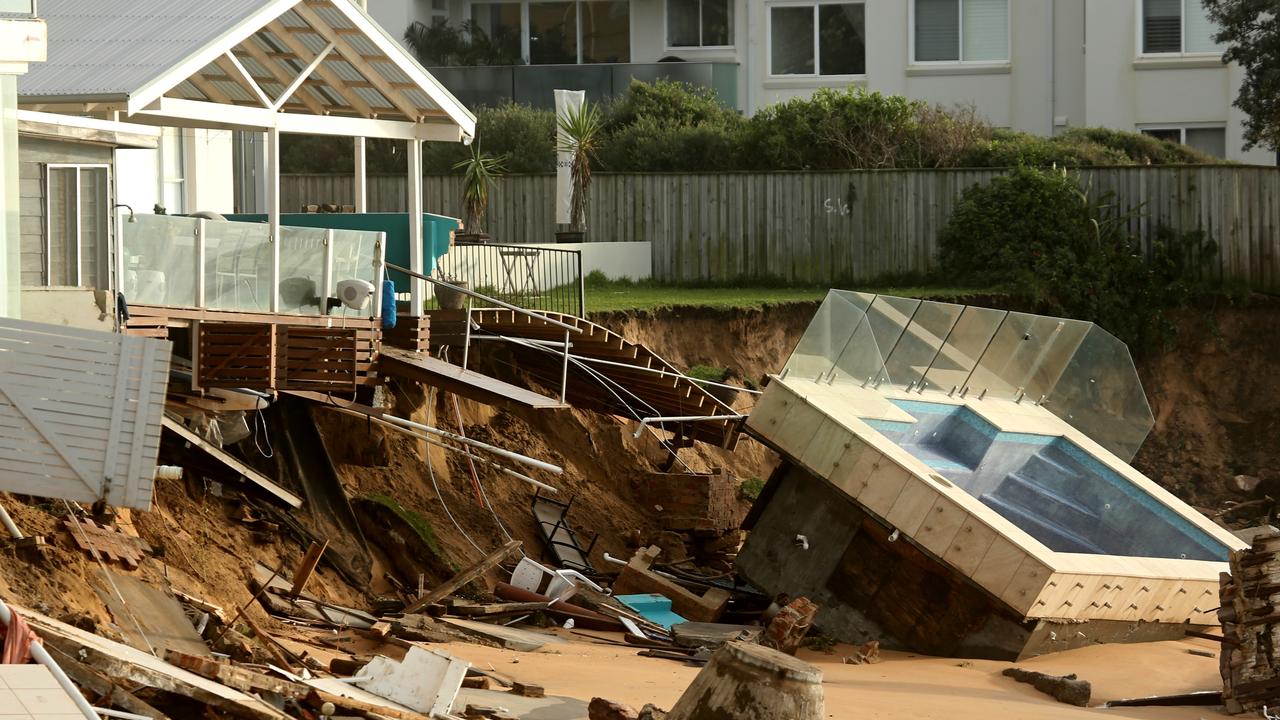
He estimated he had spent about $100,000 on the pool and the decking around it, which was also lost in the storm. His insurer NRMA has declined to pay for any of the costs after declaring the damage was due to a sea surge, something he intends to dispute.
The pool was approved by council in 2014 and had been in place for less than two years before the storm hit.
The council approval of the pool noted the property was on land at risk of coastal erosion and wave impact during severe storms.
While the original design of the pool was changed from a fibreglass construction to instead be made of reinforced concrete, council officers noted the changes did not address the impact of severe storms on the pool.
“As the pool is to be located within the area of wave impact it is likely to be damaged during a coastal storm,” an assessment report noted.
“This would create a hazard for the property at 1142 Pittwater Road, adjoining properties and the beach.
“To address this the proposal will be conditioned to ensure it is suitably designed.”
A condition was placed on the approval but council played no further role in assessing how this was done, with it left up to the private certifier to analyse.
“Unfortunately the pool was built without some of these requirements in place,” Northern Beaches Mayor Michael Regan told news.com.au.
“As the pool was underground and certified by a private certifier, council had no way of knowing about some of these issues.”
Residents face ‘planning vacuum’
In the immediate aftermath of the storm, Mr Silk said residents were faced with a “planning vacuum” as the NSW Government had just introduced new legislation on coastal management that took a while to navigate.
There was no set path residents could follow to resolve their issues and to get a sea wall built quickly to protect their properties from future storm events.
Mr Silk and his nine other neighbours were not the only ones impacted.
In total there are 49 land parcels along Collaroy beach that are exposed, these include houses and unit blocks. They have been divided up into around six groups.
Each group needs to get agreement from all owners to lodge a development application and to fund their section of wall.
The council and NSW Government are contributing $3.4 million towards parts of the sea wall that protect private property but $13.84 million must come from private residents.
Just one group has begun construction, with work beginning to the north of Mr Silk’s home in February, and is ongoing.
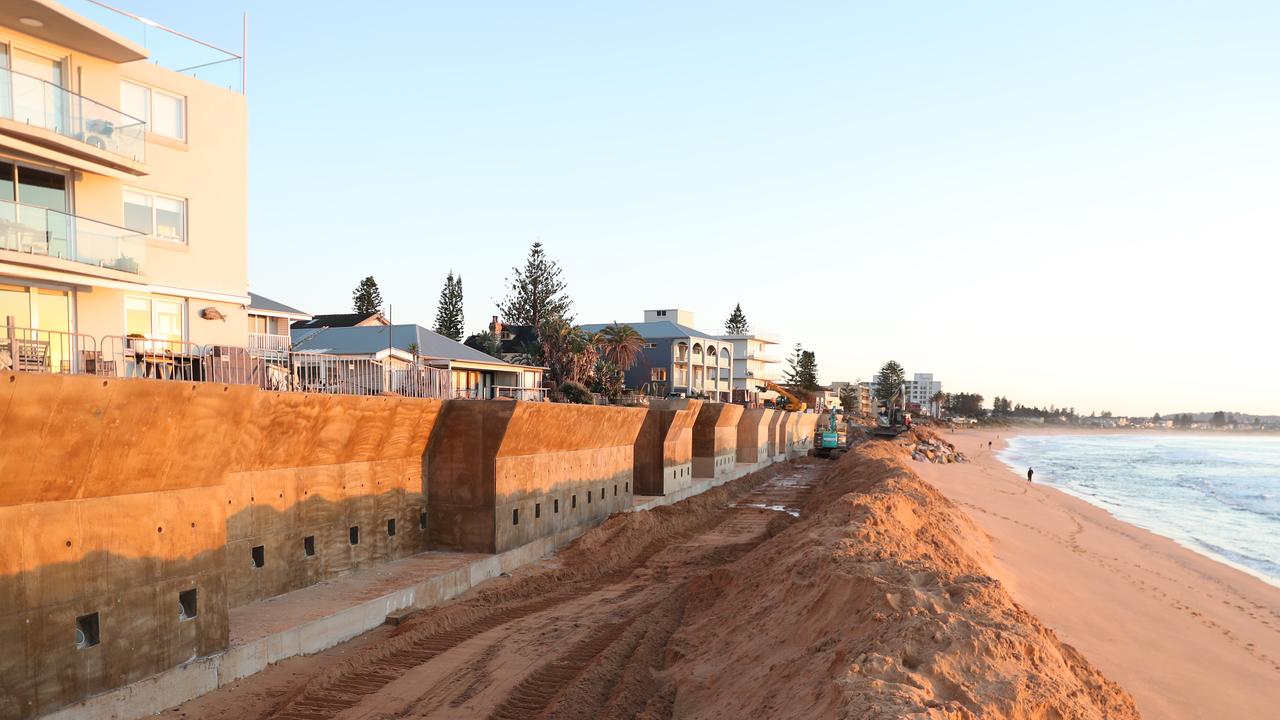
In order to get to this stage Northern Beaches Council was forced to step in to help residents, particularly Mr Silk’s group.
Mayor Michael Regan said council had navigated planning law, property law, environmental assessments, climate change research, coastal engineering, emergency planning, insurance and state legislation to find ways to allow property owners to protect themselves without impacting on the public beach.
“This has included changes to funding guidelines, new grant streams, land agreements, setting new development controls, updating planning frameworks, and setting new consent arrangements,” he said.
The process for Mr Silk’s group was complicated by the fact that their properties were set back slightly from other surrounding properties, which meant they had to get permission to build the wall on Crown land.
It has been a years-long process but the council believes it has come up with the best possible outcome for the landowners while being equitable to other ratepayers who are partially helping to fund a sea wall that impacts a public beach.
“We have forged the path for other local government areas and what we have achieved will set a precedent for other areas,” Mayor Regan said.
‘There’s nothing to force people to pay’
It’s becoming clear that a system will need to be developed for councils to navigate these issues as climate change worsens and property owners on other beaches including in Wamerbal on the NSW central coast, face the same problems.
However, the NSW Government seems determined to leave it up to local councils to manage.
“Funding decisions for the Collaroy Seawall rest with Northern Beaches Council,” a spokesperson for the Office of Local Government told news.com.au.

The spokesperson said there were options for councils to implement coastal works including through a special rate variation. However, this way of raising money would see all ratepayers contribute to the cost.
If councils want private landowners to pay for a sea wall, there is no mechanism for them to help those who can't afford to do so.
State Government legislation does not allow the council to cover costs (to be repaid through rate charges or once the property is sold) if a property owner can’t afford the contribution or does not want to pay.
“There’s nothing in there to force people to pay,” Mr Silk said. “There’s no way you can make someone do it.”
Mr Silk said he would like to see a fund that would be able to loan people money if can’t afford it or don’t want to pay. This could be recovered in regular repayments or once the property was sold.
“I don’t know why they can’t get on with it, if there’s no mechanism, create a mechanism,” he said.
He believes the rise in property prices once the wall is built will compensate for its cost but this is not enough to convince some people to pay as they believe the cost should be covered by government.
Within his own group of homeowners, Mr Silk said the issues had changed as time went on.
“Once you sort one issue out, another comes. People’s circumstances change and you’re trying to work your way through it and get it resolved.
“I would hope it’s resolved for the early part of next year, I don’t think it will happen before,” he said.
“We may not even be able to get it sorted, it depends on whether there is some movement on the issues we’ve got.”
Mr Silk said the State Government should come up with a solution.
“What upsets me is they haven’t got to grips with it even after they can see groups here struggling,” he said. “They haven’t thought it appropriate to make alternations to allow things to happen.”
Mr Silk said most people’s wealth, what they had worked towards for their entire lives, was rolled up in their homes.
More Coverage
“Like most people, it’s their biggest financial asset,” he said.
For some people in Collaroy this could all be swept away in an instant.
charis.chang@news.com.au | @charischang2



